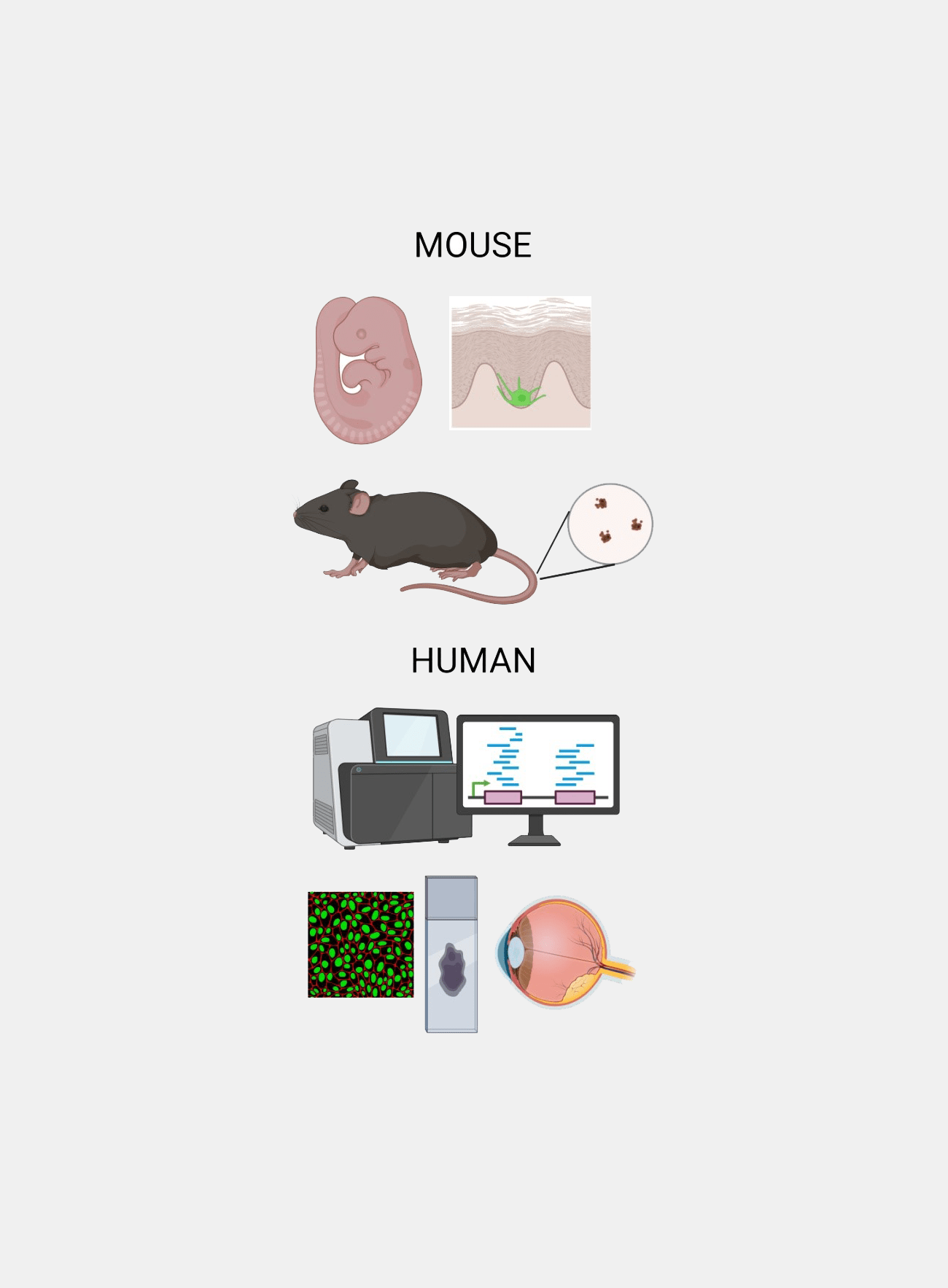Pigment Cells: A Window Into Genetics, Evolution, and Human Health
Studying pigment cells is a lot of fun, because the field bridges developmental biology, human and animal genetics, human diversity and evolution. With the knowledge we gain, we can better understand human health, diseases such as melanoma, and adaptations to diverse environments.
- We study normal mammalian pigment cells, called melanocytes, as they grow and migrate in mouse embryos.
- Using mice with mutations in key genes, we investigate how melanocytes contribute to the pigmentation of the skin and eyes, and do interesting things like make freckles. We model melanoma in genetically engineered mice, where all stages of tumor development can be studied and potential therapeutics can be tested.
- We identify the molecular steps that transform normal human melanocytes into melanoma in the eye, using 'omics approaches from the genome to the proteome.
